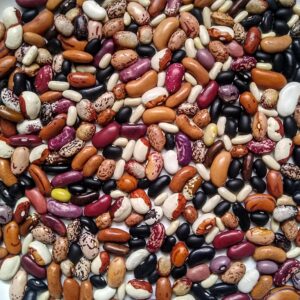
Farmers have battled glyphosate-resistant weeds for a decade now (starting just a few years after the release of Roundup Ready crops) but only recently has the gravity of the problem caught the attention of major media. Most recently, the New York Times (“Farmers Cope with Roundup-Resistant Weeds“).
Resistance to the most popular herbicide in the world has created a weed problem far worse than existing weed pressures at the time Roundup Ready was adopted. Of course, Roundup Ready crops encourage herbicide use by their very nature, and even USDA’s data shows that herbicide use increased by 383 million pounds between 1996 and 2008. Iowa alone experienced an eightfold increase of glyphosate use after the introduction of Roundup Ready crops. With more than 90% of U.S. soybeans and cotton, and more than 80% of corn, planted to Roundup Ready varieties, it’s no wonder that weeds have developed resistance and now require more toxic and expensive chemical controls.
But, as the Times reports, it’s not merely an inconvenience or short-term challenge for farmers: “It is the single largest threat to production agriculture that we have ever seen,” said the president of the Arkansas Association of Conservation Districts.
The incentive to buy expensive Roundup Ready seed vanishes as soon as Roundup isn’t the only herbicide in the tank, as an Iowa farmer points out: “You’re having to add another product with the Roundup to kill your weeds…So then why are we buying the Roundup Ready product?” (And the article notes that Monsanto is even subsidizing the purchases of additional herbicides for some cotton farmers.)
The article also reports, “Now, Roundup-resistant weeds like horseweed and giant ragweed are forcing farmers to go back to more expensive techniques that they had long ago abandoned.” In other words, Roundup Ready is a short-lived technology that costs farmers a lot of money in high seed prices (eventually without benefiting from the technology) and then forces them to resort back to chemicals that the technology was supposed to replace. Bill Freese from the Center for Food Safety says it well: “The biotech industry is taking us into a more pesticide-dependent agriculture when they’ve always promised, and we need to be going in, the opposite direction.”
The problem is compounded by the short supply of conventional soybeans. Last year some farmers who wanted to plant conventional soybeans due to weed resistance and high biotech seed prices could not find non-Roundup Ready seed. Of course the rapid adoption of Roundup Ready technology is one reason the supply is low, but that’s only part of the story. As OSA has discussed before, concentration of market power has led to less choice in the seed marketplace and diminished innovation — especially for conventional and organic varieties.
The biotech industry’s solution to resistance is more pesticide-promoting crops, including traits that tolerate glufosinate, dicamba, and — get this — 2,4-D (a component of Agent Orange). A couple are in the pipeline for regulatory approval, which you can track here.
Our solution? Developing an alternative seed production model focused on low-input and organic systems. Seed that isn’t bred for a companion pesticide but rather the diverse agronomic needs of farmers. A system that is de-centralized, regional, and collaborative, and honors farmers’ role as stewards of seed. We hope you’ll join us.
